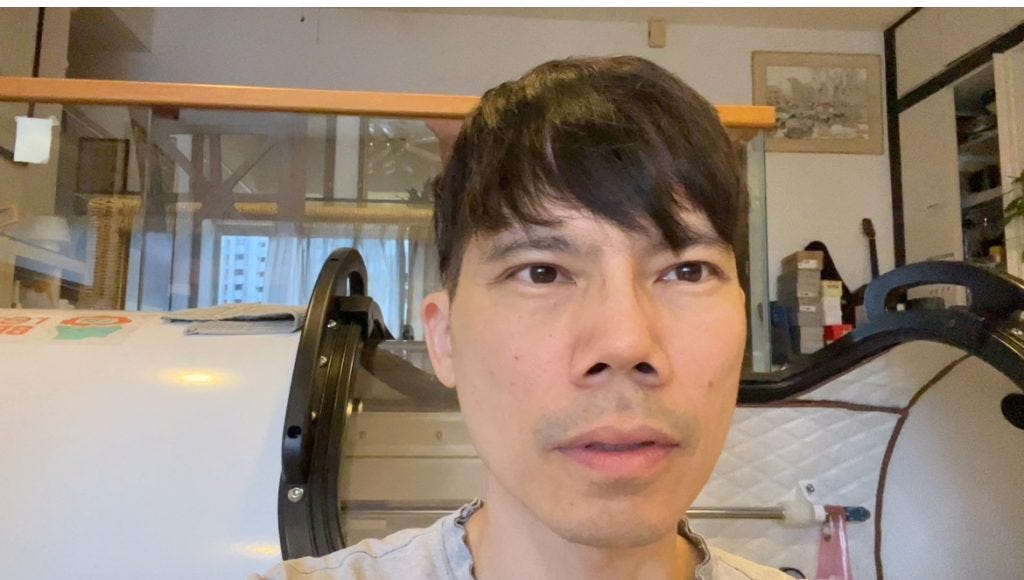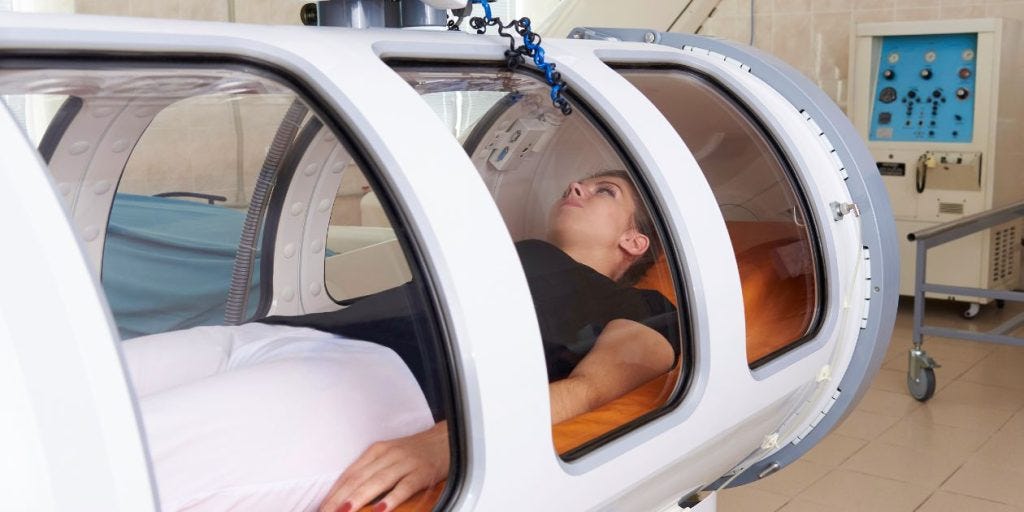Boost Wound Recovery with Hyperbaric Oxygen Therapy
Looking to speed up your wound recovery? Discover how Hyperbaric Oxygen Therapy can help heal faster, reduce pain, and promote healthier skin.
When I first heard about hyperbaric oxygen therapy (HBOT), I found myself captivated by the concept of using concentrated oxygen to accelerate healing. It sounded like something straight out of science fiction!
However, HBOT is not only scientifically sound but is also an increasingly popular treatment for conditions, including slow-healing wounds. If you’re curious about how it works or whether it’s right for you or a loved one, you’re in the right place.
In this post, I’ll explain what hyperbaric oxygen therapy is, how it speeds up wound recovery, and the wide range of benefits it can provide.
Who Am I?
Hello! I am Dr. Mark Chern, and the author of this article. In the past year, I have been researching potential interventions for improving brain function as it relates to dementia and Alzheimer’s disease. One of the interventions I have been exploring is hyperbaric oxygen therapy, which I have been using on myself and documenting in my substack articles.
I use a hard case hyperbaric oxygen chamber at a pressure of 2.0 ATA. This is akin to placing myself 10 meters (or 33 feet) underwater — and then breathing in pure oxygen.
While the intent of my intervention has been to improve my brain function (find out more on the ReverseBrainAge (RBA) project), I also read up on HBOT in general and share my learnings here on substack.
Anyway, let’s get into why HBOT is so effective for wound healing.
What Exactly Is Hyperbaric Oxygen Therapy?
Hyperbaric oxygen therapy, or HBOT for short, is an advanced medical treatment where patients breathe pure oxygen inside a pressurized chamber. Unlike the regular air we breathe, which contains only about 21% oxygen, HBOT delivers 100% oxygen at higher-than-atmospheric pressures. This combination increases the oxygen concentration in your blood and tissues dramatically.
Now, you might be wondering, “Why does oxygen matter for healing?” Oxygen plays a critical role in almost every biological process in our bodies – and it is ESSENTIAL for wound recovery!
Without adequate oxygen, healing can slow down—or even stop altogether. HBOT pushes oxygen into areas where your body might not be supplying enough, thereby triggering an accelerated healing response.
Also read: Key Facts About Soft Hyperbaric Oxygen Chambers You Should Know
How Does Hyperbaric Oxygen Therapy Boost Wound Healing?
The science behind HBOT is fascinating and deeply rooted in how our body recovers from injury. Here are the key mechanisms that explain its ability to enhance wound healing:
1. Increased Oxygen Delivery to Tissues
When a wound forms — whether from an injury, a surgery, or a chronic condition like diabetic foot — the damaged tissue often suffers from decreased blood flow and oxygen supply. This is called hypoxia, and it significantly impairs the healing process.
In an HBOT chamber, pressurized oxygen is dissolved directly into your plasma (the liquid part of your blood). This allows oxygen to penetrate tissues up to three times farther than under normal circumstances. The additional oxygen jumpstarts wound healing by:
Stimulating the growth of blood vessels (angiogenesis)
Encouraging cellular repair and regeneration
Reducing inflammatory swelling
2. Collagen Production
Collagen is the protein that forms the structural framework of your skin and is essential for repairing wounds. Guess what kickstarts collagen production? Yup, it OXYGEN!
HBOT provides the tissue environment needed for fibroblasts — the cells that produce collagen — to thrive.
3. Anti-Inflammatory Properties
HBOT reduces inflammation at the wound site, which is crucial for proper healing. Chronic or excessive inflammation impedes recovery, but the high-dose oxygen therapy has been shown to downregulate inflammatory markers while improving overall immune response.
4. Increased Antibacterial Effects
One of HBOT’s hidden superpowers is its ability to fight off infection. Certain bacteria, especially anaerobic ones, cannot survive in oxygen-rich environments.
Even though HBOT has traditionally been used in the treatment of diabetic foot, most medical doctors may only prescribe HBOT for severe foot ulcers — those that are classified as Wagner grade 3 or higher!
Which Types of Wounds Can Benefit?
Not all wounds are created equal, and HBOT is particularly effective for certain situations. According to medical professionals, HBOT is often recommended for the following types of wounds and conditions:
Chronic, non-healing wounds (such as diabetic foot ulcers)
Pressure ulcers (commonly known as bedsores)
Injuries caused by radiation therapy (radiation wounds or burns)
Burns or thermal injuries
Infected wounds, especially complicated ones like necrotizing fasciitis
Additionally, HBOT is frequently used for skin grafts and flaps, as it helps improve the success rate of these delicate surgical procedures.
Proven Benefits of Hyperbaric Oxygen Therapy
By now, you likely have a clear picture of the science and mechanisms behind HBOT, but let’s take a step back and focus on the big picture: What are the key benefits you can actually expect with this therapy?
1. Faster Healing Times
One of the most notable advantages of HBOT is its ability to speed up the natural healing process. For patients with chronic wounds that have been stuck in a cycle of inflammation, this feels almost like a miracle.
2. Reduced Risk of Complications
Slow-healing wounds can lead to infections, tissue death, or even the need for amputation in extreme cases. HBOT reduces these risks by improving blood flow, immune function, and cellular repair.
3. Minimal Side Effects
Unlike invasive procedures, HBOT is a non-surgical and relatively low-risk therapy. For most people, the side effects are minimal, such as mild ear discomfort from the pressure changes—similar to what you might experience on an airplane.
4. Enhanced Quality of Life
Living with a chronic or non-healing wound isn’t just physically painful; it’s also emotionally draining. By helping patients heal more effectively, HBOT can greatly improve overall quality of life, reducing stress and restoring mobility.
Also read: Morgan Moses Embraces Hyperbaric Chamber Nights for Faster Rehab
Who Is a Good Candidate for HBOT?
Hyperbaric oxygen therapy isn’t for everyone, and it’s important to talk to your doctor before starting treatment. Typically, people with chronic wounds, radiation injuries, and certain infections are the best candidates for HBOT. This is one of the historical uses of hyperbaric oxygen therapy.
However, if you have certain medical conditions — this includes untreated lung disease, inner ear problems, or a history of collapsed lung — your doctor may suggest alternative treatments. Pregnant individuals and those undergoing chemotherapy should also tread carefully.
What to Expect During HBOT Treatment
If you or a loved one is considering HBOT, the good news is that it’s typically straightforward and comfortable. Here’s a quick walkthrough of what to expect:
For the first session, I recommend (from my own experience) not to start at the highest pressure. This means to do a 1.3 ATA session before progressing up to 1.5 ATA, 2.0 ATA or higher.
For the first session, it can be helpful to distract yourself by playing with your phone. You can attempt meditation or sleeping in future session, but take my advice, be distracted in your first session, it will normalize the experience for you!
During the session, which lasts about 1-2 hours, you’ll relax in a pressurized chamber while breathing pure oxygen.
After treatment, many people feel slightly tired or lightheaded, but there’s no downtime required. You can resume normal activities almost immediately.
Also read: Can Hyperbaric Oxygen Therapy Cure Traumatic Brain Injury (TBI)?
Final Thoughts: Is HBOT Right for You?
Hyperbaric oxygen therapy is a cutting-edge treatment that offers real hope for people with stubborn wounds or complex healing processes. By delivering concentrated oxygen to compromised areas, HBOT jumpstarts your body’s natural repair mechanisms and provides benefits that are almost impossible to achieve with other therapies alone.
I have been doing HBOT on my own for a while, and while it is not primarily for wound healing, the concept is the same — I want more oxygen in my brain, so that areas of the brain that are ‘less alive’ will be enlivened and rejuvenated!
If you’re dealing with a slow-healing wound, look for a HBOT clinic nearby and see if they can help you! If you or someone you know has already experienced the benefits of hyperbaric oxygen therapy, do share your thoughts in the comments below!








